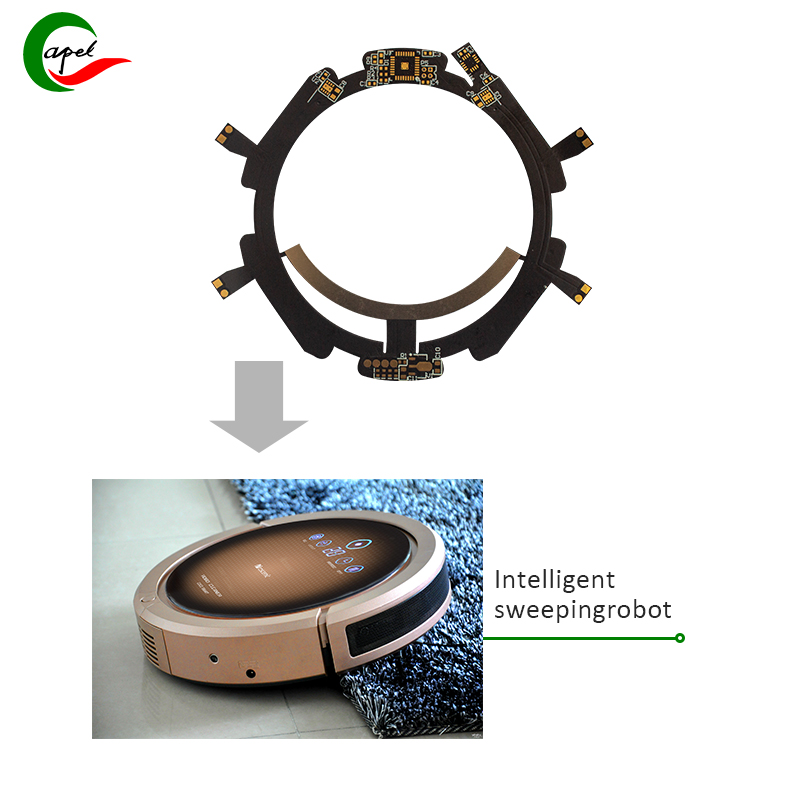In an ever-evolving technological world, the demand for smaller, lighter, and more versatile electronic devices continues to grow. Therefore, engineers and designers are constantly seeking new ways to meet these needs without compromising functionality. One innovative solution that has gained a lot of attention in recent years is the use of rigid-flex circuit boards in consumer electronics.
Rigid-flex circuit boards are hybrid boards that combine the characteristics of rigid and flexible PCBs (Printed Circuit Boards). They are composed of a combination of flexible circuits and rigid sections to provide the best of both worlds. This unique combination of flexibility and rigidity offers numerous advantages, making it an attractive choice for consumer electronics.
One of the main advantages of using rigid-flex circuit boards in consumer electronics is their ability to withstand harsh environments. Due to their flexible properties, these boards can bend, twist and conform to the shape of the device in which they are used. This flexibility makes them highly resistant to mechanical stress and vibration, ensuring the durability and longevity of electronic devices.
In addition, the size and weight of rigid-flex circuit boards are significantly reduced compared to traditional rigid PCBs. As consumer electronics become increasingly compact, the ability to integrate circuitry into small spaces is critical. Rigid-flex boards enable complex designs and three-dimensional configurations, allowing engineers to optimize space utilization and create smaller, sleeker devices.
Another advantage of using rigid-flex circuit boards in consumer electronics is their enhanced reliability. Traditional rigid PCBs often rely on multiple interconnects and connectors, increasing the risk of failure due to loose or broken connections. In contrast, rigid-flex boards eliminate the need for separate connectors, minimizing potential points of failure and increasing the overall reliability of the device.
In addition, rigid-flex circuit boards improve signal integrity and reduce electromagnetic interference. The flexible portion of the circuit board acts as a natural shock absorber, reducing crosstalk and signal distortion. This enhanced signal stability ensures efficient and reliable operation of electronic devices, making it ideal for high-frequency applications such as wireless communication systems.
The versatility of rigid-flex circuit boards also extends to their compatibility with a variety of components and technologies. They can be seamlessly integrated with other electronic components such as microprocessors, sensors and displays to create a complete functional system. In addition, rigid-flex boards can accommodate a variety of assembly technologies, including surface mount technology (SMT) and through-hole technology (THT), providing flexibility in the design and manufacturing process.
Despite the many advantages, there are certain factors that need to be considered when using rigid-flex circuit boards in consumer electronics. First, the design and production of these boards requires specialized expertise and equipment. Therefore, working with an experienced PCB manufacturer or consultant is critical to ensuring a successful implementation of rigid-flex technology.
Second, rigid flex boards can be more expensive to manufacture than traditional PCBs. Complex manufacturing processes, specialized materials and additional testing requirements result in increased costs. However, as demand grows and technology advances, costs gradually decrease, making rigid-flex boards easier to use in consumer electronics applications.
In summary, the use of rigid-flex circuit boards in consumer electronics offers numerous advantages to designers, engineers, and consumers alike. Their ability to withstand harsh environments, reduce size and weight, enhance reliability, and improve signal integrity make them an excellent choice for modern electronic equipment. While initial costs and specialized manufacturing requirements may present some challenges, the benefits outweigh the disadvantages, making rigid-flex boards a promising technology for the future of consumer electronics. So, the answer to the question, “Can rigid-flex circuit boards be used in consumer electronics?” is a resounding yes.
Post time: Oct-05-2023
Back







